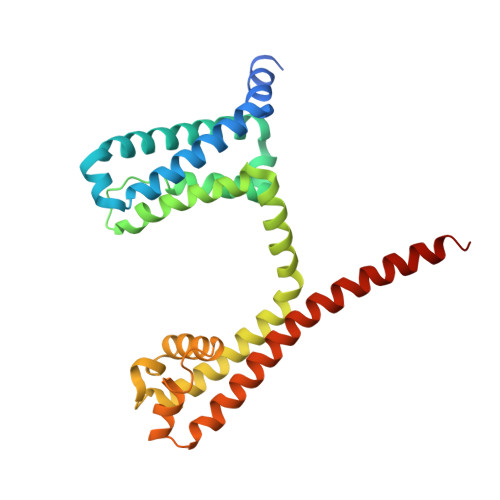Structural basis for severe pain caused by mutations in the S4-S5 linkers of voltage-gated sodium channel Na V 1.7.
Wisedchaisri, G., Gamal El-Din, T.M., Zheng, N., Catterall, W.A.(2023) Proc Natl Acad Sci U S A 120: e2219624120-e2219624120
- PubMed: 36996107
- DOI: https://doi.org/10.1073/pnas.2219624120
- Primary Citation of Related Structures:
8DIZ, 8DJ0, 8DJ1 - PubMed Abstract:
Gain-of-function mutations in voltage-gated sodium channel Na V 1.7 cause severe inherited pain syndromes, including inherited erythromelalgia (IEM). The structural basis of these disease mutations, however, remains elusive. Here, we focused on three mutations that all substitute threonine residues in the alpha-helical S4-S5 intracellular linker that connects the voltage sensor to the pore: Na V 1.7/I234T, Na V 1.7/I848T, and Na V 1.7/S241T in order of their positions in the amino acid sequence within the S4-S5 linkers. Introduction of these IEM mutations into the ancestral bacterial sodium channel Na V Ab recapitulated the pathogenic gain-of-function of these mutants by inducing a negative shift in the voltage dependence of activation and slowing the kinetics of inactivation. Remarkably, our structural analysis reveals a common mechanism of action among the three mutations, in which the mutant threonine residues create new hydrogen bonds between the S4-S5 linker and the pore-lining S5 or S6 segment in the pore module. Because the S4-S5 linkers couple voltage sensor movements to pore opening, these newly formed hydrogen bonds would stabilize the activated state substantially and thereby promote the 8 to 18 mV negative shift in the voltage dependence of activation that is characteristic of the Na V 1.7 IEM mutants. Our results provide key structural insights into how IEM mutations in the S4-S5 linkers may cause hyperexcitability of Na V 1.7 and lead to severe pain in this debilitating disease.
- Department of Pharmacology, University of Washington, Seattle, WA 98195.
Organizational Affiliation:


















